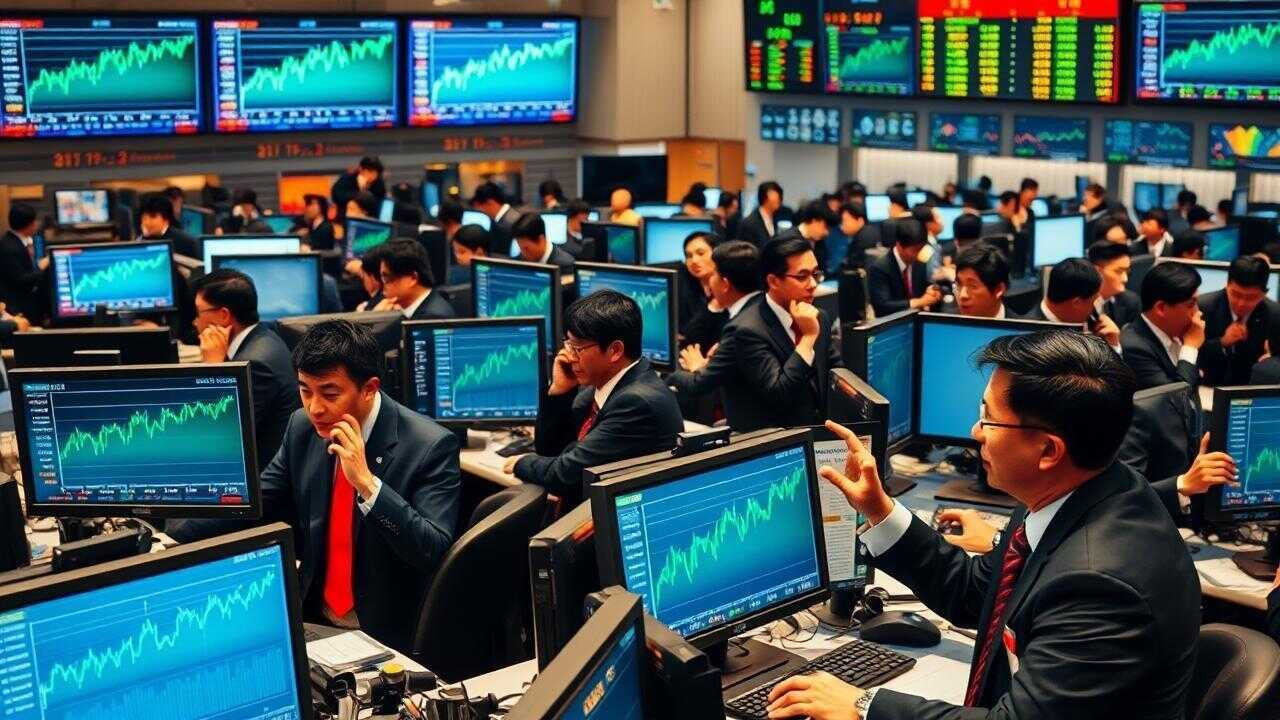Asian markets displayed mixed performance amid renewed concerns over President Trump’s tariff plans. Japan’s Nikkei 225 saw gains, while Hong Kong’s Hang Seng Index edged up slightly. Conversely, South Korea’s Kospi and Shanghai’s Shenzhen experienced declines, the latter influenced by slower Chinese economic growth attributed to escalating trade tensions.
Navigating Choppy Waters: Asian Markets React to Tariff Talk
Global markets are a bit like the ocean – sometimes calm, sometimes turbulent. And lately, we’ve been seeing some pretty significant waves, especially in Asia. A renewed threat of tariffs from, shall we say, a certain prominent political figure across the Pacific, has investors holding their breath, resulting in a mixed bag of performance across key Asian stock exchanges.
The air is thick with uncertainty. Just when we thought trade tensions were simmering down, the pot gets stirred again. It’s a reminder that the global economy is a delicate ecosystem, easily disrupted by political pronouncements and policy shifts. This latest bout of anxiety comes courtesy of the ever-looming possibility of increased tariffs, specifically aimed at key economic sectors. Let’s take a closer look at how some major Asian markets are weathering this storm.
Hong Kong Bucks the Trend: A Glimmer of Optimism?
While most of its regional counterparts are feeling the pressure, Hong Kong’s Hang Seng index managed to eke out a gain, rising approximately 0.2%. This relative resilience might be attributed to a number of factors, perhaps including bargain hunters stepping in to scoop up undervalued stocks or a localized boost from specific sectors within the Hong Kong economy. Whatever the reason, it offers a small ray of hope amidst the broader market unease. Could Hong Kong be a safe harbor in this stormy sea? Time will tell, but it’s definitely a point worth watching.

Shenzhen Feels the Pinch: Tech Takes a Hit
On the other end of the spectrum, the Shenzhen index experienced a more pronounced dip, sliding down around 0.9%. This decline likely reflects investor concerns about the impact of potential tariffs on China’s technology sector. Shenzhen, a hub for innovation and technological development, is particularly vulnerable to trade policies that could restrict access to key components or markets. The tech industry is so intertwined globally that any disruption is bound to create ripples. The market’s reaction suggests a cautious approach to tech investments in the current climate.
A Region Divided: Other Asian Markets in the Balance
Beyond Hong Kong and Shenzhen, other Asian markets are presenting a mixed picture. Some are showing slight gains, while others are registering modest losses. This indecision highlights the widespread uncertainty gripping the region. Investors are carefully weighing the potential risks and rewards, trying to anticipate the next move in this high-stakes game of global trade. This period of volatility underscores the importance of diversification and a long-term investment strategy. Jumping at shadows rarely yields positive results.
Decoding the Market Jitters: What’s Really Going On?
It’s easy to get caught up in the daily fluctuations of the market, but it’s important to understand the underlying drivers. In this case, the market jitters are primarily fueled by fear of the unknown. Tariffs can disrupt supply chains, increase costs for businesses, and ultimately lead to slower economic growth. The prospect of renewed trade tensions raises serious questions about the future of international commerce.
Furthermore, market sentiment is heavily influenced by speculation about future policy decisions. Investors are constantly trying to predict what governments and central banks will do next, and these expectations can have a significant impact on asset prices. This constant guessing game adds another layer of complexity to an already challenging investment environment.
Finding Opportunity Amidst Uncertainty in Asian Stock Markets
While market volatility can be unsettling, it also presents opportunities for savvy investors. Periods of uncertainty often create chances to buy quality assets at discounted prices. However, it’s crucial to do your homework and carefully assess the risks before making any investment decisions. A knee-jerk reaction is never a good strategy.
Consider focusing on companies with strong fundamentals, solid balance sheets, and a proven track record of weathering economic storms. A diversified portfolio is also key to mitigating risk. Don’t put all your eggs in one basket, especially in a volatile market environment. Now is the time to be strategic, not impulsive. Learning about specific stock valuation metrics is key.
The Asian stock markets are facing a challenging period. The threat of renewed tariffs has created a climate of uncertainty, leading to mixed performance across the region. While some markets, like Hong Kong, have shown resilience, others, like Shenzhen, are feeling the pressure. It’s crucial for investors to stay informed, exercise caution, and focus on long-term strategies to navigate these choppy waters. Diversifying your portfolio and understanding key market indicators can equip investors to make wise decisions.







